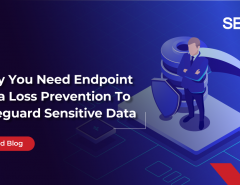The worst has happened. Your database has been breached and the company is scrambling for cover. Every second seems to be a time bomb and your IT security team is working overtime, trying to assess the damage. Your CEO and other senior executives are panicking and furious, your corporate communication team is at their wits’ ends, fielding calls from the media.
Now what?
- Relax
Take a deep breath. Everyone around you may be panicking but you just adding to the chorus will not help matters one bit. In fact, it will probably make things worse as costly mistakes are often made during moments of blind panic. They also dilute your capacity to make decisions. Handle the situation calmly – understand that the breach has already happened and it cannot be undone. Take a deep breath, calm yourself and…
- Assess the Risk
Get your IT team and understand what has been breached. Is it confidential company information? Customer data? Your future plans? Understand the extent of damage as well – there is a difference between just customer names being leaked and full financial details, including credit card information, of your customers being breached. Every kind of data breach will require a different kind of handling, based on what kind of data has been breached. Understand, evaluate and decide on the next plan of action accordingly.
- Initiate your Incident Management/Disaster Recovery Plan
All security certification, regulation, industry standards require that you should have a well designed and well-documented incident management and disaster recovery plan. You should have rehearsed the plan in simulated situations. Now is the time for real execution of the plan. Follow the drill to ensure no steps are missed and minimize further damage. Take realistic and rational calls where judgment is needed. Do not bypass any incident management procedure. These plans are designed specifically for the situations where brains may run amok in panic. Trust them.
- Communicate
A key component of crisis management, whether of the cybersecurity kind or anything else, is clear, impactful communication. In the case of a breach, communication is essential and a point that cannot be ignored. Once you have assessed the extent of damage and how it is affected, you must communicate to all concerned stakeholders about the magnanimity of the situation. It is important to be clear and transparent whether to internal stakeholders like employees or external stakeholders like customers. Nip rumors right in the bud as they can cause distrust and damage aware. Devise a proper communication strategy for external communication and ensure all employees, especially senior leaders, are on the same page.
- Backup
If you have been backing up your data through services like the ones Seqrite offers for Data Loss Prevention (DLP), this is when it will come in handy. Ensure that you switch to a last known safe backup so that you do not lose your data. However, be careful to ensure that your backed up data has also not been infiltrated.
- Prepare for the future
There is no way you can reverse this breach but you can take steps for the future. Ensure you take a deep hard look at your cybersecurity framework and find out ways to strengthen it. This should happen across the enterprise right from the senior level to the employee level. Ensure that no gap is left open because as the criminals have proved, they will leave no stone unturned.
Enterprises should ensure they guard against breaches by employing a strong cybersecurity solution. They can consider Seqrite’s Endpoint Security (EPS) solution offers a comprehensive platform which integrates Data Loss Protection with technologies such as Anti Ransomware, Advanced DNA Scan, Behavioural Detection System. The Data Loss Prevention feature prevents data loss by monitoring confidential and user-defined data shared through removable drives, networks, and various applications.
As an IT security partner for your business, Seqrite provides comprehensive security from advanced cyber threats. To know more




